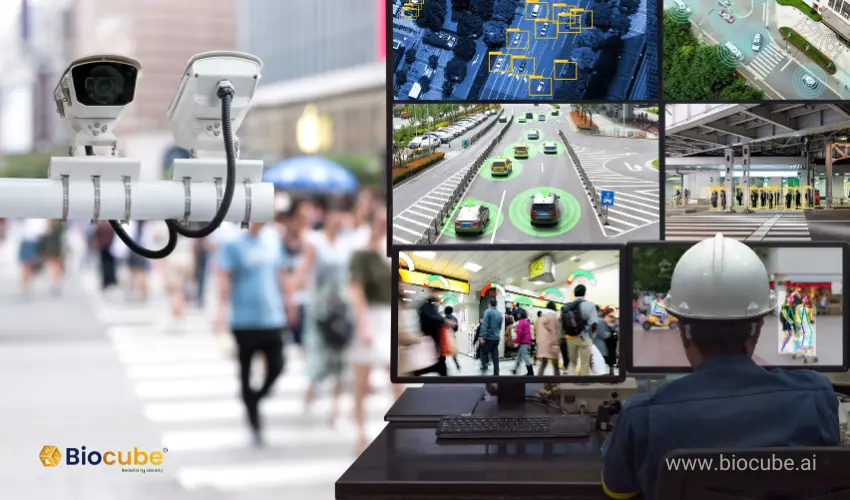
Video Surveillance: Manufacturing companies are increasing every year in India. According to a source, there are 6,80,000 manufacturing establishments in India and 10,00,000 in the United States. Often such enterprises include surveillance cameras to detect activities at all times.
The advantages of these security systems vary from recognizing persons involved in theft to determining employee productivity. Moreover, as technologies have advanced, the role of CCTV cameras with network access or LAN connectivity in manufacturing companies has substantially increased.
Nowadays, cameras are incorporated with Artificial Intelligence (AI) and face biometrics which are not merely used for tracking employee productivity with the check-in and checkout logs but also for granting access to restricted areas via face recognition. Moreover, the capabilities extend to body posture detection and other varied areas.
Table of Contents
The Importance of Video Surveillance in the Manufacturing Workplace

End Point Security
The primary role of video surveillance cameras in manufacturing companies is to determine the entry and exit points of workers. However, traditional systems, even those with LAN or internet access, often require manual intervention. For example, security employees have to ensure that the persons are using the designated gates only.
As technology has advanced, such cameras can incorporate AI and send alerts for users’ check-in and checkout logs. Therefore, there is no requirement for manual intervention, and attendance logs can be viewed remotely, eliminating the need for a command center.
Intrusion Detection
AI-powered surveillance cameras can also detect intrusion into restricted areas. Moreover, the system can be configured to send real-time alerts of such unauthorized activities. Additionally, face biometric-based access control solutions also grant access to the correct person.
Such contactless biometric systems can even help avoid attempts of spoofing or tampering if they incorporate built-in liveness detection. Moreover, they can also be used as an attendance management system that delivers timestamps and geolocation of the employee’s entry and exit points.
Workplace Surveillance: Monitoring Employee Productivity
Manufacturing companies often hire employees on a contract or hourly basis. According to a source, nearly five and a half million factory contractual workers were employed in 2022. Therefore, ensuring that employees are working adequately during their allocated hours is essential for businesses, as it is directly impacting the bottom line.
Moreover, certain companies that employ workers for managing thermal imaging, gas, or others require extra care and need someone to stay present at all times. This is because they could have a catastrophic impact and require immediate action. Surveillance cameras help to view whether an allocated person is present at the location or not.
AI-assisted surveillance systems can generate alerts whenever a person is not present or whenever significant damage could happen. They can determine this with predictive analytics based on historical data.
Enhancing the Safety of the Workers
Video surveillance systems are very crucial in manufacturing units as they help to know the exact place where an incident has happened. Surveillance cameras can even help to determine if an incident involved a worker or an intruder.
However, such a system can keep the records for a week. Today, AI-enabled CCTV cameras with face biometric technology also help to determine the culprits involved during post-investigation scenarios.
Furthermore, such advanced CCTV cameras also ensure the safety of the workers by letting them know that they are under surveillance and must adhere to the code of conduct. Hence, they enhance worker safety and premise security.
Conclusion
CCTV cameras are vital for manufacturing companies. Their role extends beyond traditional monitoring systems, especially if they integrate with face biometric systems and artificial intelligence.
Manufacturing companies can make use of CCTV with network access to view employee productivity, ensure worker safety, enhance premise security, determine unwarranted entries, and much more.
The integration of AI-powered CCTV/IP cameras has also minimized the workload of the security and IT departments by sending real-time alerts for enlisted activities such as theft, intrusion, unrestricted access, working hours, and more. Moreover, today, IT and security personnel can view the worker logs on a dashboard without installing any specialized hardware or command center.
Connect with us today to learn how Biocube can transform your existing CCTV cameras with LAN or internet access into a new-age solution for managing attendance and visitor entries and delivering enhanced video analytics.
